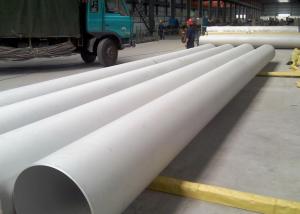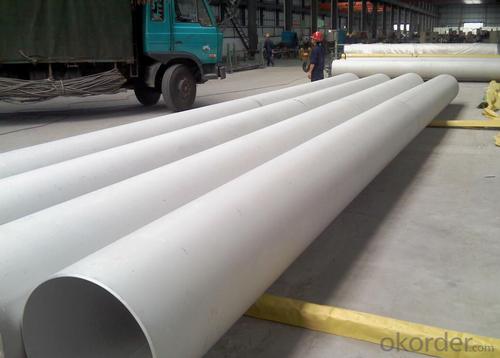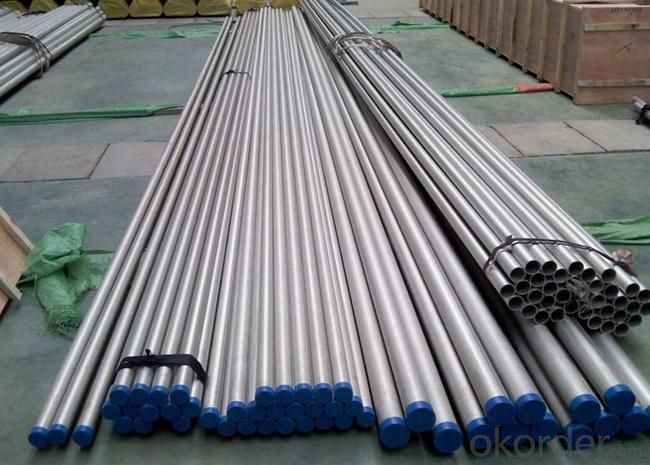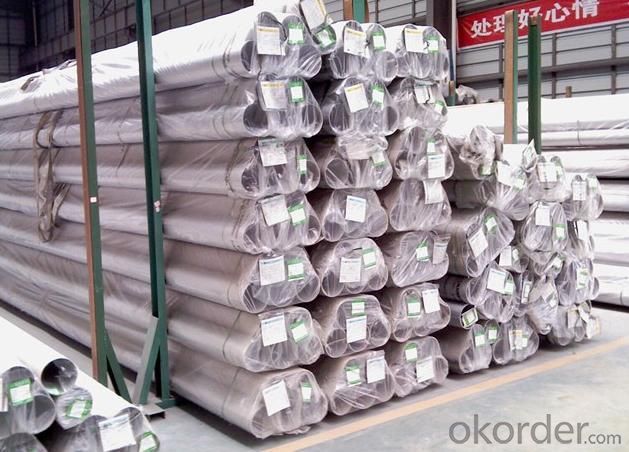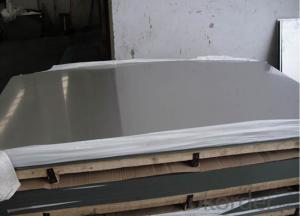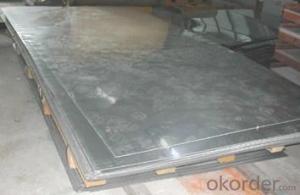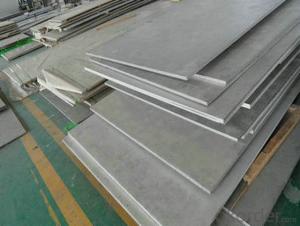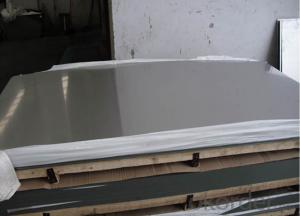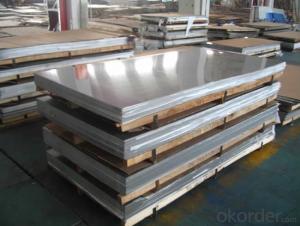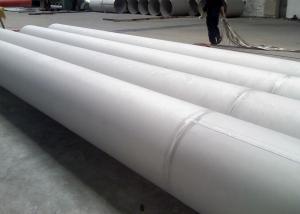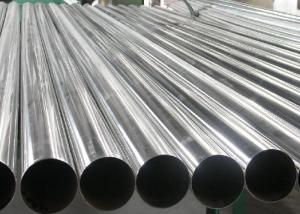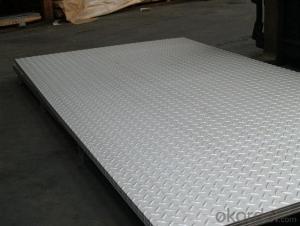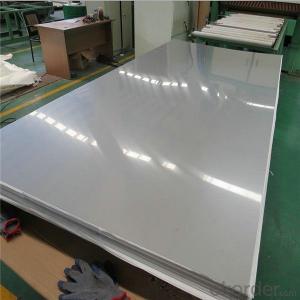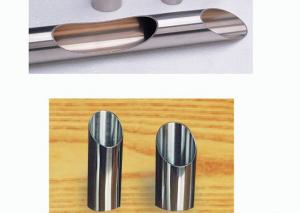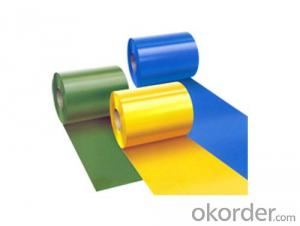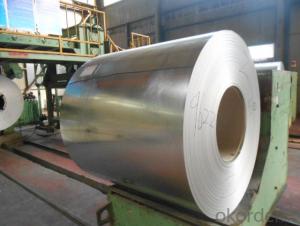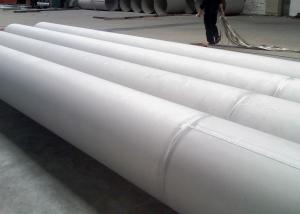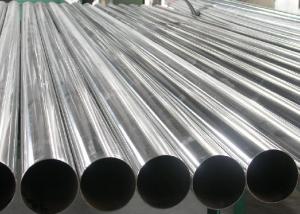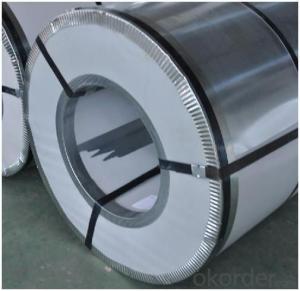321 Stainless Steel Welded Pipe
- Loading Port:
- China Main Port
- Payment Terms:
- TT or LC
- Min Order Qty:
- 5 Tons m.t.
- Supply Capability:
- -
OKorder Service Pledge
OKorder Financial Service
You Might Also Like
Stainless Steel Welded Pipe
APPLICATION:
Industrial Fluid Conveying
Boiler,Heat Exchanger and condenser
Sanitary and Thin-wall water pipe
Oil and Gas transportation etc.
Standards :
ASTM A249/A269/A270/A312/A358/A788/A789/A790
DIN/EN 10217/DIN 11850
JIS G3459,GB/T 12771 etc.
SIZES:
|
OUTSIDE DIAMETER |
OD |
WALL THICKNESS | |||
|
SCH 5S |
SCH 10S |
SCH 40S | |||
|
N.B |
NPS |
mm |
mm |
mm |
mm |
|
8 |
1/4' |
13.72 |
- |
- |
2.24 |
|
10 |
3/8' |
17.15 |
- |
- |
2.31 |
|
15 |
1/2' |
21.34 |
1.65 |
2.11 |
2.77 |
|
20 |
3/4' |
26.67 |
1.65 |
2.11 |
2.87 |
|
25 |
1' |
33.4 |
1.65 |
2.77 |
3.38 |
|
32 |
1-1/4' |
42.16 |
1.65 |
2.77 |
3.56 |
|
40 |
1-1/2' |
48.26 |
1.65 |
2.77 |
3.68 |
|
50 |
2' |
60.33 |
1.65 |
2.77 |
3.91 |
|
65 |
2-1/2' |
73.03 |
2.11 |
3.05 |
5.16 |
|
80 |
3' |
88.9 |
2.11 |
3.05 |
5.49 |
|
90 |
3-1/2' |
101.6 |
2.11 |
3.05 |
5.74 |
|
100 |
4' |
114.3 |
2.11 |
3.05 |
6.02 |
|
125 |
5' |
141.3 |
2.77 |
3.4 |
6.55 |
|
150 |
6' |
168.28 |
2.77 |
3.4 |
7.11 |
|
200 |
8' |
219.08 |
2.77 |
3.76 |
8.18 |
|
250 |
10' |
273.05 |
3.4 |
4.19 |
9.27 |
|
300 |
12' |
323.85 |
3.96 |
4.57 |
9.52 |
|
350 |
14' |
355.6 |
3.96 |
4.78 |
11.13 |
|
400 |
16' |
406.4 |
4.19 |
4.78 |
12.7 |
|
450 |
18' |
457.2 |
4.19 |
4.78 |
14.27 |
|
500 |
20' |
508 |
4.78 |
5.54 |
15.09 |
|
550 |
22' |
558.8 |
4.78 |
5.54 |
15.09 |
|
600 |
24' |
609.6 |
5.54 |
6.35 |
17.48 |
|
650 |
26' |
660.4 |
5.54 |
7.92 |
17.48 |
|
700 |
28' |
711.2 |
5.54 |
7.92 |
17.48 |
|
750 |
30' |
762 |
6.35 |
7.92 |
17.48 |
|
800 |
32' |
812.8 |
- |
7.9 |
17.48 |
|
850 |
34 |
863.6 |
- |
7.92 |
17.48 |
|
900 |
36' |
914.4 |
- |
7.92 |
19.05 |
|
1000 |
40' |
1016 |
- |
9.53 |
- |
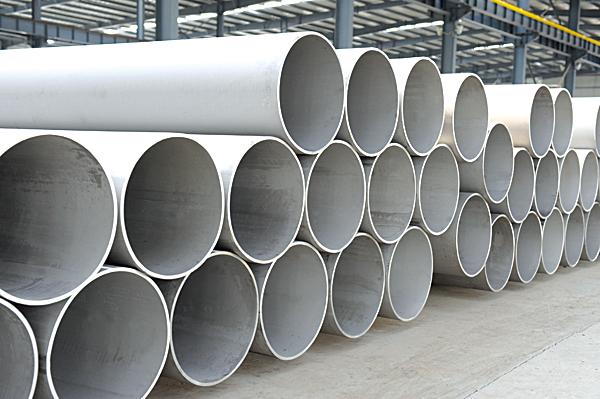
- Q: What does "80 wire" stainless steel plate mean? How much more expensive than the average stainless steel plate?
- It's 0.08mm stainless steel!! It's so thin. It's expensive. A kilo is at least 10 yuan!!
- Q: How to calculate the weight of stainless steel plate?
- There are usually only six kinds of steel related to the application of building construction. They all contain 17 to 22% chromium, and better steel also contains nickel. The addition of molybdenum can further improve atmospheric corrosion, especially for atmospheric corrosion resistant chlorides.
- Q: What is the maximum operating temperature for stainless steel sheets?
- The maximum operating temperature for stainless steel sheets can vary depending on the grade of stainless steel, but it typically ranges between 1500-1650°F (816-899°C).
- Q: How do I prevent galvanic corrosion on stainless steel sheets?
- To prevent galvanic corrosion on stainless steel sheets, there are several measures you can take: 1. Ensure proper alloy selection: Choose a grade of stainless steel that is less prone to galvanic corrosion. Grades such as 316 and 317 are more resistant to corrosion compared to 304 stainless steel. 2. Separate dissimilar metals: Avoid direct contact between stainless steel sheets and other metals, especially those with a higher potential for galvanic corrosion. If contact is necessary, use insulating materials such as gaskets or rubber pads to separate the metals. 3. Use protective coatings: Apply protective coatings or paints specifically designed for stainless steel to create a barrier and prevent galvanic corrosion. These coatings act as a sacrificial layer, shielding the stainless steel from direct contact with the corrosive material. 4. Use isolation materials: Install insulating materials between stainless steel sheets and other dissimilar metals. These can include plastic washers, insulating tape, or non-conductive gaskets to prevent direct electrical contact and subsequent corrosion. 5. Proper maintenance: Regularly clean and inspect stainless steel sheets to remove any contaminants or foreign substances that could promote corrosion. Avoid using abrasive cleaners or tools that could damage the protective layer of the stainless steel. 6. Electrochemical protection: Implement cathodic protection techniques, such as using sacrificial anodes or impressed current systems, to provide an external source of electrons that can counteract galvanic corrosion. These methods help shift the corrosion potential of the stainless steel sheets to a more passive range. By following these preventive measures, you can significantly reduce the risk of galvanic corrosion on stainless steel sheets, ensuring their longevity and maintaining their structural integrity.
- Q: Can stainless steel sheets be used for escalator cladding?
- Yes, stainless steel sheets can be used for escalator cladding. Stainless steel is a popular choice for cladding materials due to its durability, corrosion resistance, and aesthetic appeal. It can withstand heavy usage and is resistant to wear and tear, making it suitable for escalators. Stainless steel sheets can be fabricated into various shapes and sizes, allowing for customization and seamless installation on escalator surfaces. Additionally, stainless steel has a sleek and modern appearance, enhancing the overall aesthetics of the escalator.
- Q: How do you determine the grade of a stainless steel sheet?
- To determine the grade of a stainless steel sheet, several factors need to be considered. Firstly, the composition of the stainless steel should be analyzed. Stainless steel is typically made up of a combination of metals such as iron, chromium, nickel, and other elements. The specific percentages of these metals will determine the grade of the stainless steel. For instance, a stainless steel sheet with higher chromium and nickel content will generally have a higher grade. Another important consideration is the mechanical properties of the stainless steel. These properties include the tensile strength, yield strength, and elongation of the material. Different grades of stainless steel will have varying mechanical properties, and these properties can be measured through standardized testing methods. Surface finish is also a factor in determining the grade of a stainless steel sheet. The finish can range from a rough, dull surface to a smooth, polished one. Different grades of stainless steel may have specific surface finishes, and this can be verified by visual inspection or by using specialized equipment. Additionally, the corrosion resistance of the stainless steel sheet plays a significant role in determining its grade. Stainless steel is known for its resistance to corrosion, and higher grades of stainless steel will typically offer better resistance to various corrosive environments. Corrosion testing methods, such as salt spray testing, can help assess the corrosion resistance of a stainless steel sheet. In summary, the grade of a stainless steel sheet can be determined by analyzing its composition, mechanical properties, surface finish, and corrosion resistance. By considering these factors, one can accurately identify the grade of a stainless steel sheet and determine its suitability for specific applications.
- Q: Are stainless steel sheets suitable for pharmaceutical equipment?
- Indeed, stainless steel sheets prove to be appropriate for pharmaceutical equipment. The pharmaceutical industry extensively utilizes stainless steel owing to its exceptional resistance to corrosion, remarkable strength, and hygienic attributes. Its ease of cleaning and sterilization renders it perfect for applications that demand utmost cleanliness and product purity. Moreover, stainless steel displays resistance to chemicals and can endure extreme temperatures, thereby making it suitable for a multitude of pharmaceutical procedures. Furthermore, stainless steel sheets can be tailored in terms of thickness, size, and finish to fulfill precise equipment specifications. On the whole, stainless steel sheets deliver longevity, dependability, and the indispensable sanitary properties indispensable for pharmaceutical equipment.
- Q: What are the different types of mirror finishes available for stainless steel sheets?
- Stainless steel sheets offer a variety of mirror finishes, each with its own distinct look and reflectivity level. The most commonly used mirror finish is the #8 Mirror Finish. It boasts a highly polished surface that resembles a mirror, providing exceptional clarity and reflectivity. Achieving this finish involves using progressively finer grit abrasive compounds during the polishing process. If you're looking for a slightly less reflective option, the #7 Mirror Finish is a great choice. It still offers a high level of reflectivity and showcases a smooth, shiny surface with minimal distortion. For a moderately reflective surface with a slightly duller appearance, consider the #6 Mirror Finish. This finish hides minor surface imperfections while providing good reflectivity. It's often used in architectural applications that require a balance between reflectivity and durability. If you prefer a more subtle and sophisticated look, the Satin Mirror Finish is perfect. It features a satin-like appearance with a brushed texture, resulting in a low level of reflectivity. This finish is commonly used in decorative applications like interior design or furniture. For a vintage or aged appearance, the Antique Mirror Finish is ideal. It involves applying special chemical treatments to the stainless steel surface, creating a reflective surface with a distorted and tarnished look. This finish adds a unique and artistic touch to various applications. Ultimately, the decision on which mirror finish to choose depends on your desired level of reflectivity, aesthetic preferences, and the specific requirements of your application.
- Q: How do you determine the hardness of stainless steel sheets?
- To determine the hardness of stainless steel sheets, several methods can be used. One common method is the Rockwell hardness test, which measures the depth of indentation on the surface of the material. In this test, a diamond cone or steel ball is pressed into the sheet at a specific load, and the depth of penetration is measured. The Rockwell hardness value is then determined based on the depth of the indentation. Another method is the Vickers hardness test, which uses a diamond indenter to create a square-shaped indentation. The size of the indentation is measured and converted into a hardness value. This method is often used for thin materials like stainless steel sheets. Brinell hardness test is another technique that can be used. It involves applying a known load to the material using a hardened steel ball and measuring the diameter of the resulting indentation. The hardness value is then calculated based on the applied load and the diameter of the indentation. In addition to these mechanical tests, there are also non-destructive methods like ultrasonic hardness testing and magnetic hardness testing. Ultrasonic testing measures the speed of sound through the material, which is then correlated to hardness. Magnetic hardness testing measures the magnetic properties of the material, which are influenced by its hardness. Overall, the hardness of stainless steel sheets can be determined using various methods depending on the specific requirements and characteristics of the material.
- Q: How do you prevent chloride-induced corrosion in stainless steel sheets?
- There are various steps that can be taken to prevent corrosion in stainless steel sheets caused by chloride. These include: 1. Selecting the appropriate stainless steel grade that is resistant to chloride corrosion. Grades like 316 or 317 are particularly effective in resisting chloride attack. 2. Enhancing the resistance to chloride-induced corrosion by applying a passivation treatment to the stainless steel sheets. This treatment eliminates any surface iron contamination that might have occurred during fabrication and restores the protective oxide layer. 3. Ensuring proper cleaning of the stainless steel sheets on a regular basis to eliminate any chloride-containing contaminants that might have accumulated on the surface. It is important to maintain a clean surface as chloride ions can accumulate from sources like saltwater or cleaning products. 4. Minimizing contact with substances that contain chloride to significantly reduce the risk of corrosion. This involves avoiding direct contact with saltwater, cleaning agents that contain chloride, as well as chloride-rich environments such as swimming pools or coastal areas. 5. Taking design considerations into account in environments where chloride exposure is expected. This can involve using protective coatings, minimizing crevices or gaps where chlorides can accumulate, and ensuring proper drainage to prevent stagnant conditions. 6. Regularly inspecting and maintaining the stainless steel sheets to identify and address any potential corrosion issues before they worsen. This may include repairing surface damage, reapplying passivation treatments if necessary, and keeping the surface clean. By following these preventive measures, the risk of chloride-induced corrosion in stainless steel sheets can be significantly reduced, ensuring their long-term durability and performance.
Send your message to us
321 Stainless Steel Welded Pipe
- Loading Port:
- China Main Port
- Payment Terms:
- TT or LC
- Min Order Qty:
- 5 Tons m.t.
- Supply Capability:
- -
OKorder Service Pledge
OKorder Financial Service
Similar products
Hot products
Hot Searches
Related keywords
